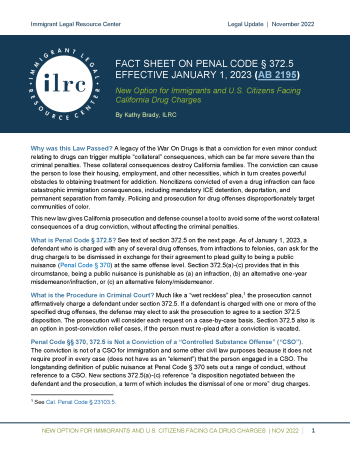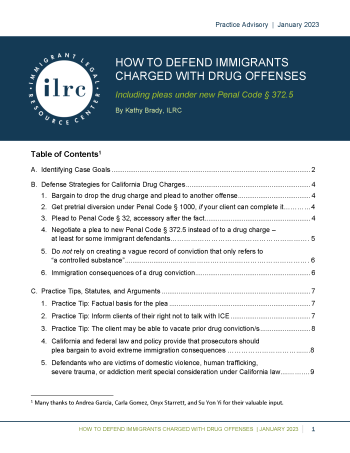Winning the Case in Immigration Court After Post-Conviction Relief
In this webinar, we will discuss the distinction between motions to terminate, remand, reconsider and reopen. We will discuss which motion to file depending on the posture of your case in immigration court. We will take a deep dive into motions to...
Crimes and Non-LPR Cancellation
In this webinar, we will explore the various ways a criminal incident can impact an application for non-LPR cancellation. We will look at the criminal conviction bars, good moral character, the stop-time rule, and discretion. This is an opportunity...
Challenging a Deficient NTA
Since the Supreme Court’s decision in Pereira v. Sessions in 2018, there has been a long line of caselaw about whether a Notice to Appear (NTA) missing the time, date or location of proceedings strips the immigration court of jurisdiction to hear a...
Withholding of Removal and CAT
Level: Beginner / Intermediate This webinar will cover withholding of removal and protection under the Convention Against Torture (CAT). It will discuss the differences between asylum, statutory and CAT withholding of removal, and CAT deferral of...
Analyzing a Crim/Imm Case
Level: Beginner / Intermediate In this webinar, attendees will receive a comprehensive, top-level review of how to analyze an immigration case when criminal history is present. We will provide a top-level overview of the grounds of inadmissibility...
Seeking Deferred Action for Immigrants in Labor Disputes
Date and Time: 03/28/2023 11:00am to 12:30pm PDT Recorded Date: 03/28/2023 Place: Online Registration Deadline: Tuesday, March 28, 2023 - 11:00am MCLE: 1.5 CA & TX


Removal Defense
Removal defense involves representing and advocating for immigrants facing deportation from the United States. For many immigrants facing removal from the United States, the process involves appearing before an immigration judge in immigration court. Most immigrants cannot afford to have an attorney represent them in court. Sadly, legal representation is the single most important factor in determining whether someone will win or lose their case.
The Immigrant Legal Resource Center (ILRC) builds the capacity of practitioners to represent clients in immigration court proceedings. As national experts in immigration law, the ILRC publishes a hands-on comprehensive manual, Removal Defense: Defending Immigrants in Immigration Court, and offers trainings on this topic. We also support practitioners and pro bono attorneys in their specific cases through our Attorney of the Day (AOD) technical assistance service.
A Guide for Immigration Advocates
A Guide for Immigration Advocates is a practical and essential tool for beginning immigration attorneys, immigration law firms employing paralegals, DOJ accredited representatives, and nonprofit community-based organizations. The Guide is unique...